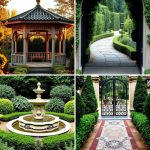A bonsai garden is a unique blend of art, nature, and mindful design that transforms small spaces into sanctuaries of calm and beauty. The delicate practice of crafting miniature trees and designing harmonious layouts encourages creativity, patience, and a deeper connection with nature. Whether you are an experienced gardener or a curious beginner, exploring bonsai garden ideas can open up endless possibilities for personal expression and relaxation. Embrace the journey of cultivating living art that brings peace and balance to your everyday life. Dive in to discover 22 Bonsai Garden Ideas that inspire and motivate your creative spirit.
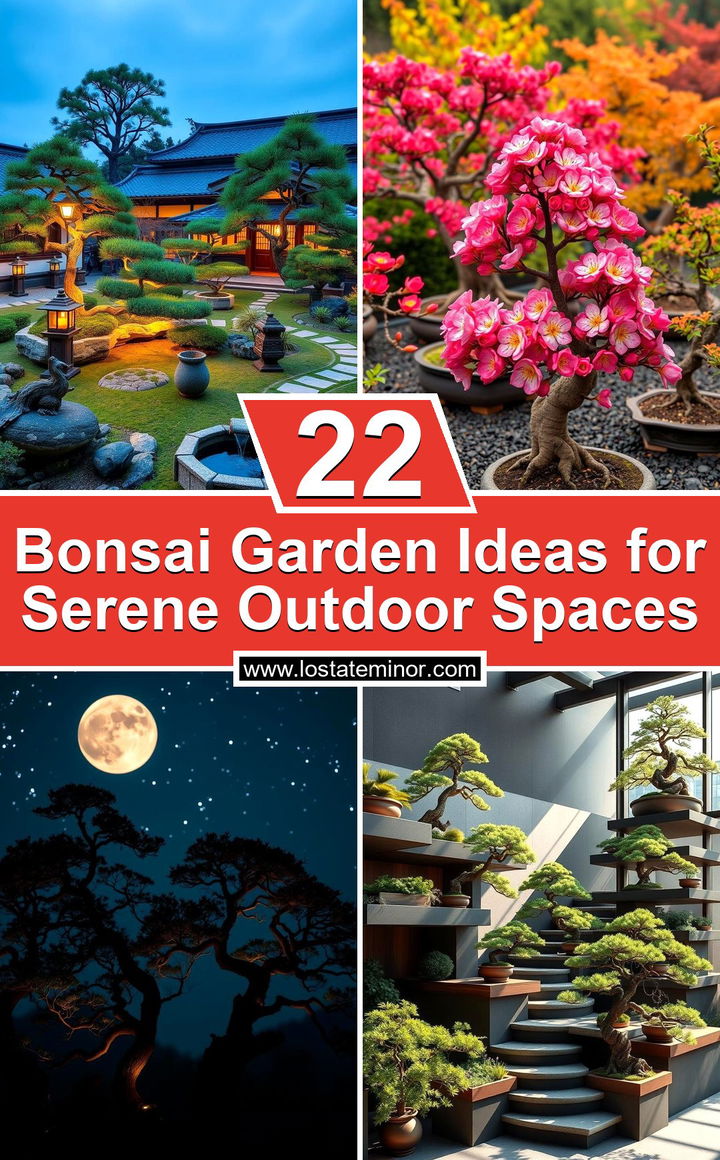
1. Zen-Inspired Bonsai Layout
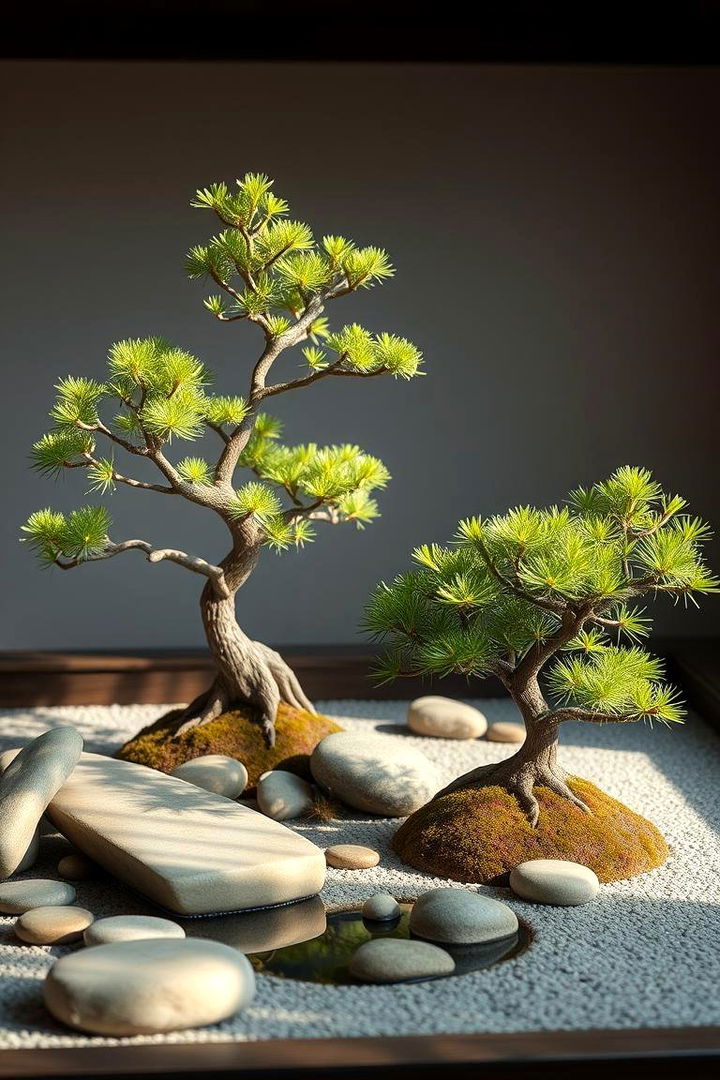
A tranquil Zen-inspired bonsai layout creates a soothing retreat that embodies balance and simplicity. This design features meticulously pruned miniature trees arranged around smooth stones and subtle water elements, echoing the calm of traditional Japanese gardens. With gentle lighting and minimalistic accessories, the space invites meditation and introspection. The use of natural materials and neutral colors further enhances the serene atmosphere. Embrace simplicity while experimenting with placement and scale to achieve a harmonious composition that encourages mindfulness and inner peace in your outdoor oasis.
2. Compact Urban Bonsai Garden
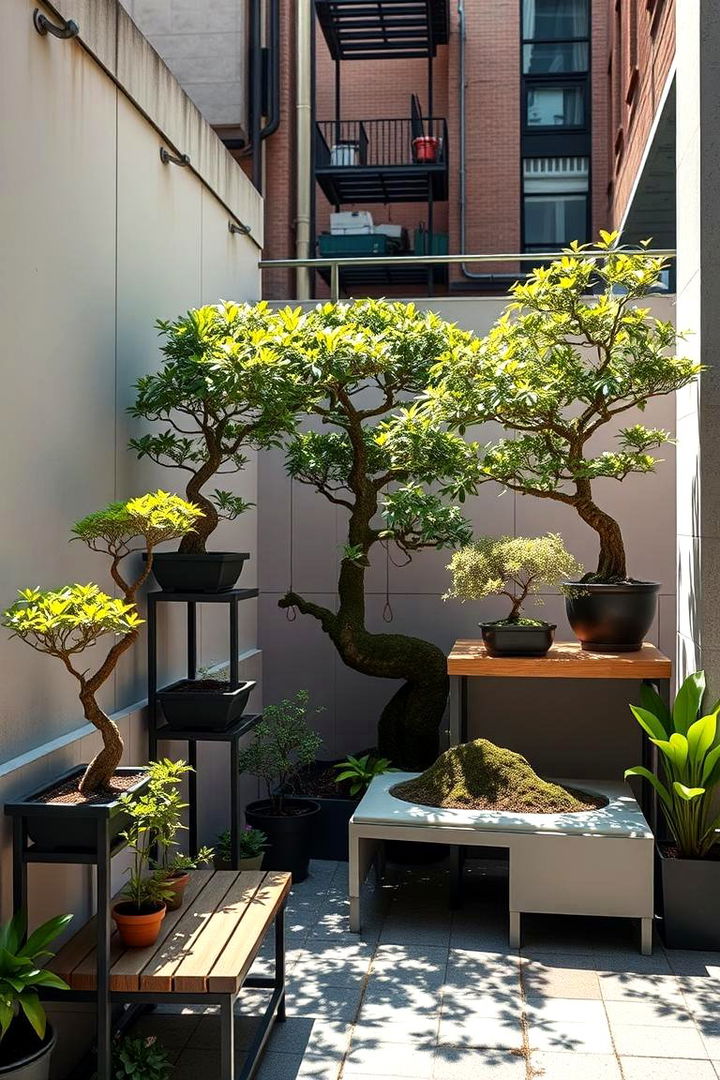
By creating a compact urban bonsai garden, you can bring nature into even the smallest city spaces. This design cleverly maximizes limited areas by incorporating vertical planters, slender benches, and strategically placed bonsai trees to evoke a refreshing slice of nature amid concrete surroundings. Natural light, combined with a mix of contemporary and traditional elements, enhances the urban vibe. Practical tips include selecting species that thrive in confined settings and using modular layouts that allow easy rearrangement. This approach not only beautifies your urban environment but also offers a moment of calm amidst the bustling city life.
3. Contemporary Minimalist Bonsai Designs
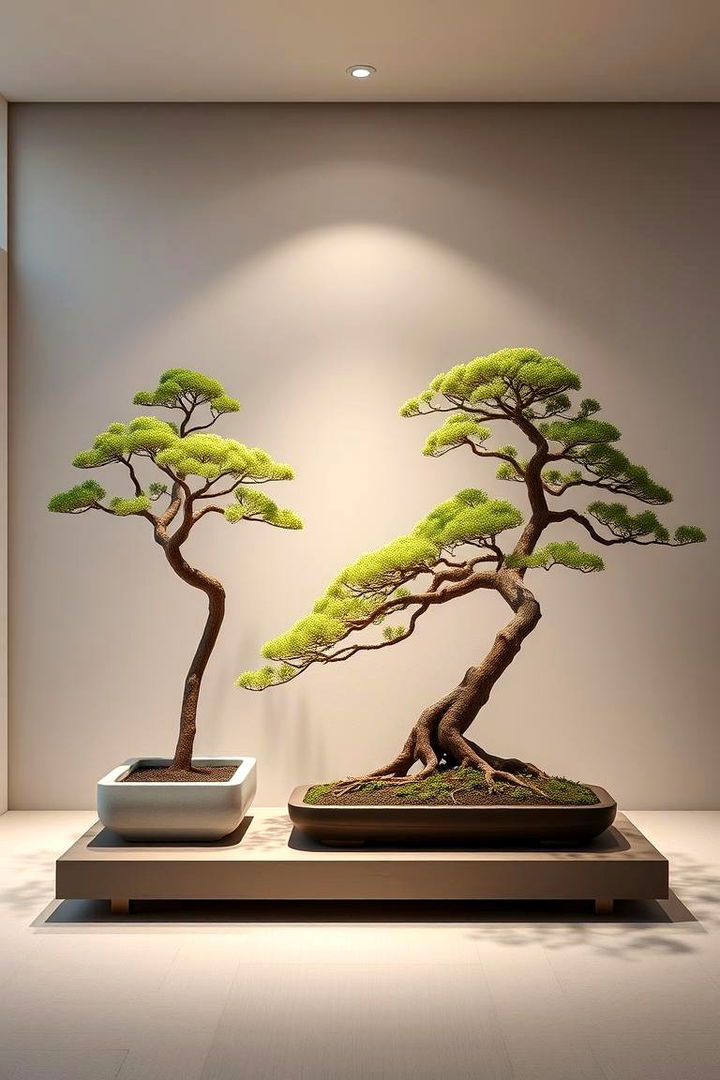
Consider a contemporary minimalist bonsai design to emphasize clean lines and uncluttered spaces. A curated selection of well-groomed bonsai trees, paired with sleek planters and sparse, modern accents, forms an aesthetic that balances art with function. This garden setup highlights natural textures and neutral tones, inviting the eye to appreciate every contour of the bonsai. Minimal distractions allow nature’s beauty to shine while achieving a refined, modern feel. Practical advice includes investing in quality planters and using subtle lighting to accentuate the sculpturesque quality of the carefully maintained trees.
4. Japanese Traditional Bonsai Setting
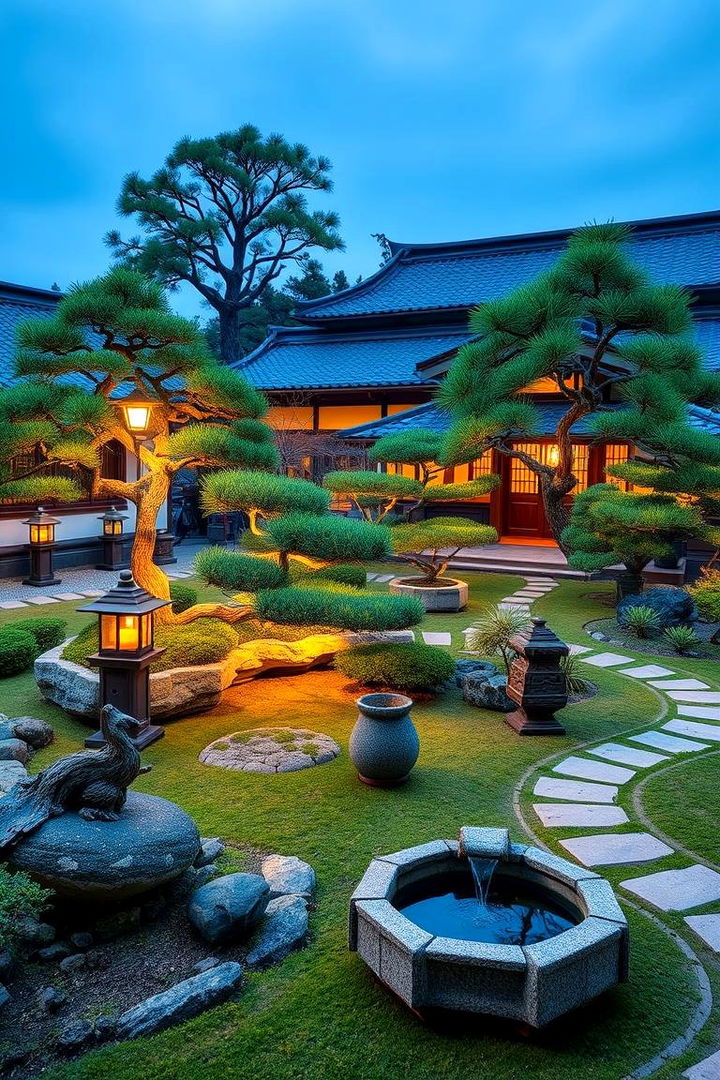
One can experience timeless elegance with a Japanese traditional bonsai setting. Inspired by centuries-old practices, this design incorporates an assortment of classic bonsai species alongside elements like bamboo water features, stone lanterns, and gently curving pathways. The focus here is on nature’s organic beauty, carefully balanced with well-chosen accessories that enhance a sense of history and serenity. Attention to detail in pruning, potting, and placement embodies the art of patience and respect for nature. This setting invites visitors to slow down, take a breath, and appreciate the art form’s cultural significance as much as its visual appeal.
5. Modern Industrial Bonsai Arrangement
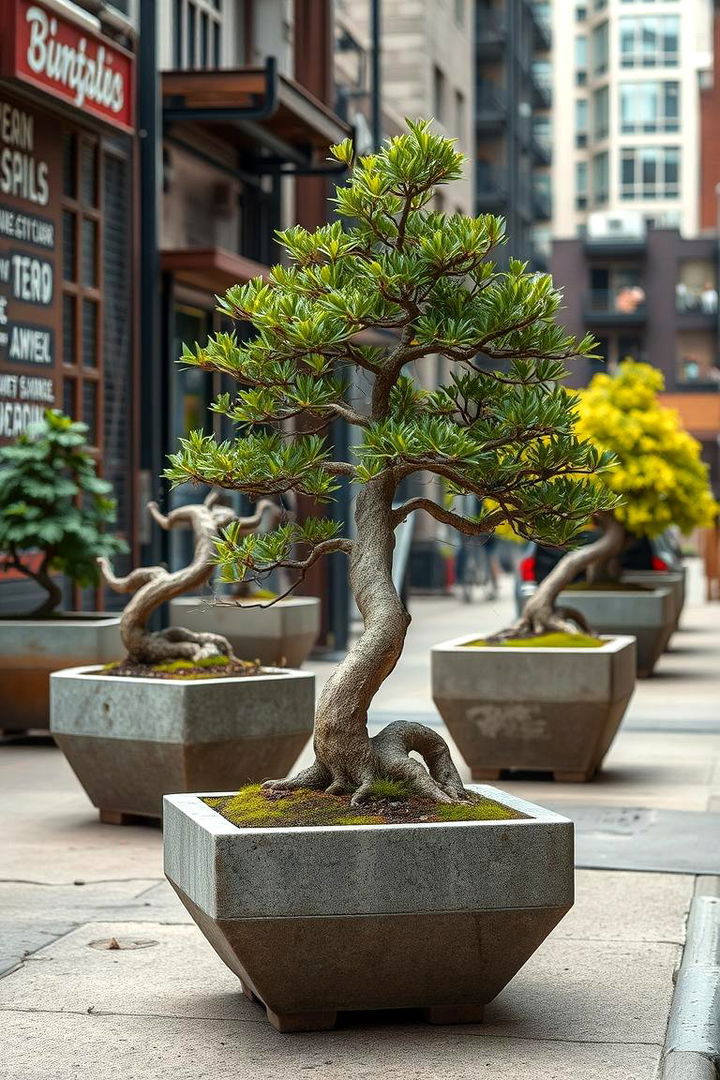
With an innovative twist, modern industrial bonsai arrangements merge rough urban aesthetics with delicate natural elements for an edgy garden experience. This style features bonsai trees set in concrete or metal planters, surrounded by industrial-inspired elements like exposed piping and weathered textures. The blend of stark, raw materials with the gentle curves of the trees creates a striking visual contrast. Practical tips include using subtle lighting to soften harsh surfaces and integrating greenery to break up the industrial monotony. This design offers a dynamic interplay between tradition and modernity that transforms any space into an artistic statement.
6. Rustic Bonsai Retreat
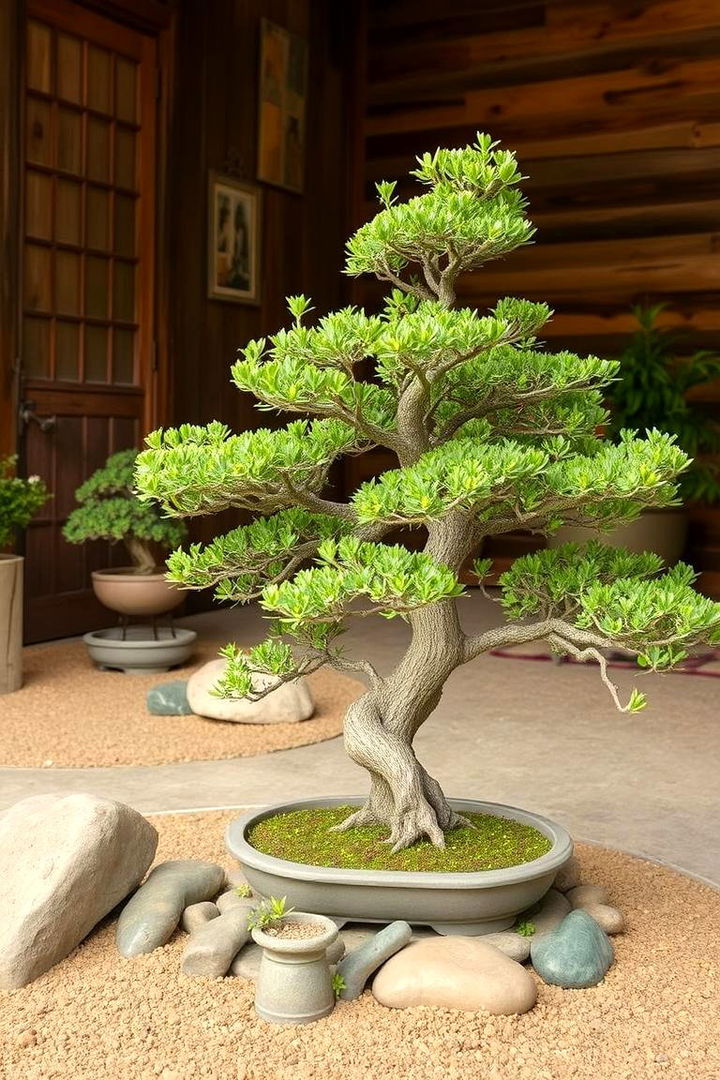
Another inspiring idea is designing a rustic bonsai retreat that exudes warmth and quaint charm. Integrating natural wood, weathered stone, and organic landscaping, this area creates a countryside-inspired haven where miniature trees play center stage. The approach encourages a harmonious blend of wild nature with deliberate gardening, evoking memories of simpler times. Emphasis on natural textures and earthy colors enhances the space’s approachable feel. Simple yet effective, this design invites leisurely strolls, reflective moments, and an appreciation for nature’s unrefined beauty while offering practical advice for sustainable garden care.
7. Water Feature Bonsai Garden
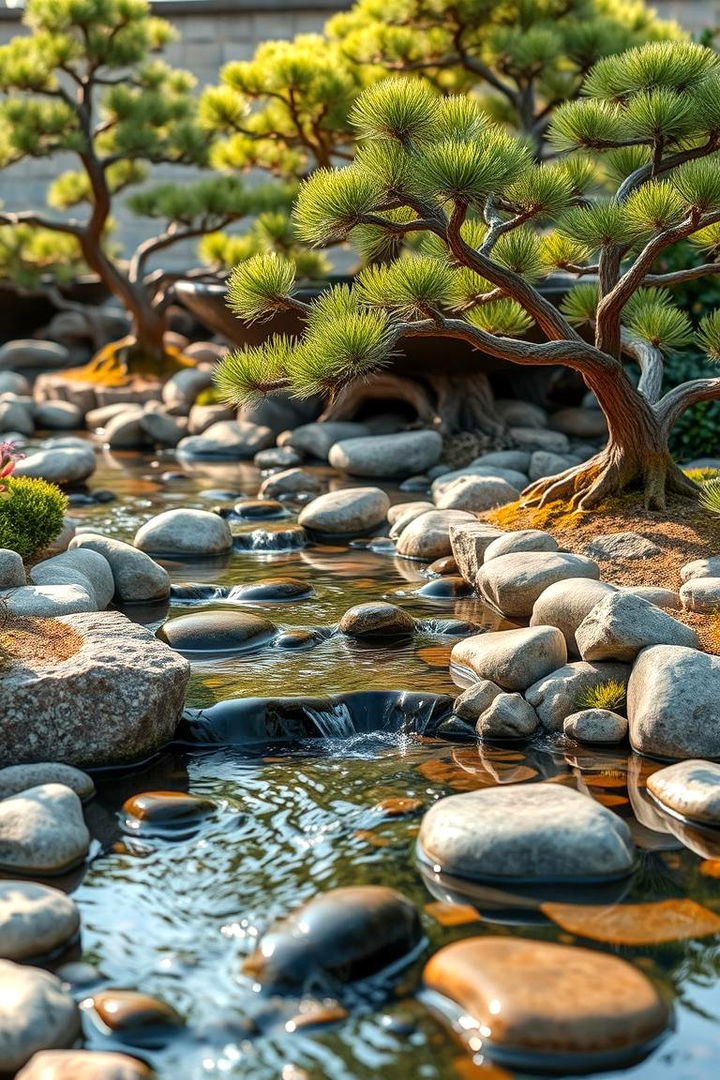
A captivating water feature bonsai garden transforms traditional layouts by incorporating reflective pools or trickling streams. Gentle water sounds merge with the subtle rustling of leaves to create an atmosphere of continuous renewal and relaxation. The integration of smooth stones, aquatic plants, and carefully selected bonsai species promotes a dynamic interplay between elements. This design teaches you to balance moisture with soil requirements and incorporate water management techniques that sustain both trees and water features. Such a garden provides not only a visual feast but also an ambient sonic backdrop, contributing to a holistic sensory experience.
8. Meditative Bonsai Sanctuary
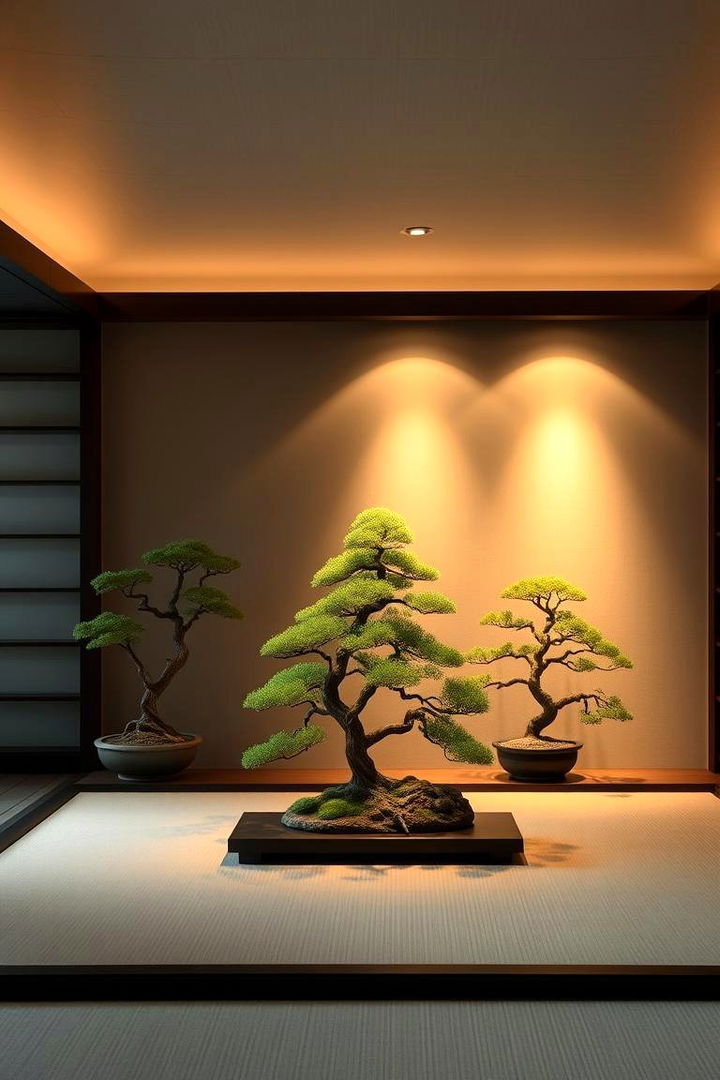
Looking for a place to unwind? A meditative bonsai sanctuary offers a quiet space designed to encourage mindfulness and relaxation. Soft lighting, subtle earthy tones, and carefully arranged miniature trees transform your garden into a personal retreat. This concept relies on the interplay of shadows, gentle sounds, and natural textures to invite deep introspection and peace. The arrangement is thoughtfully curated to eliminate distractions, allowing every element to contribute to an environment of calm. Enjoy breathing exercises amidst artfully pruned branches, providing both a creative hobby and a personal escape from daily stress.
9. Seasonal Bonsai Blossoms
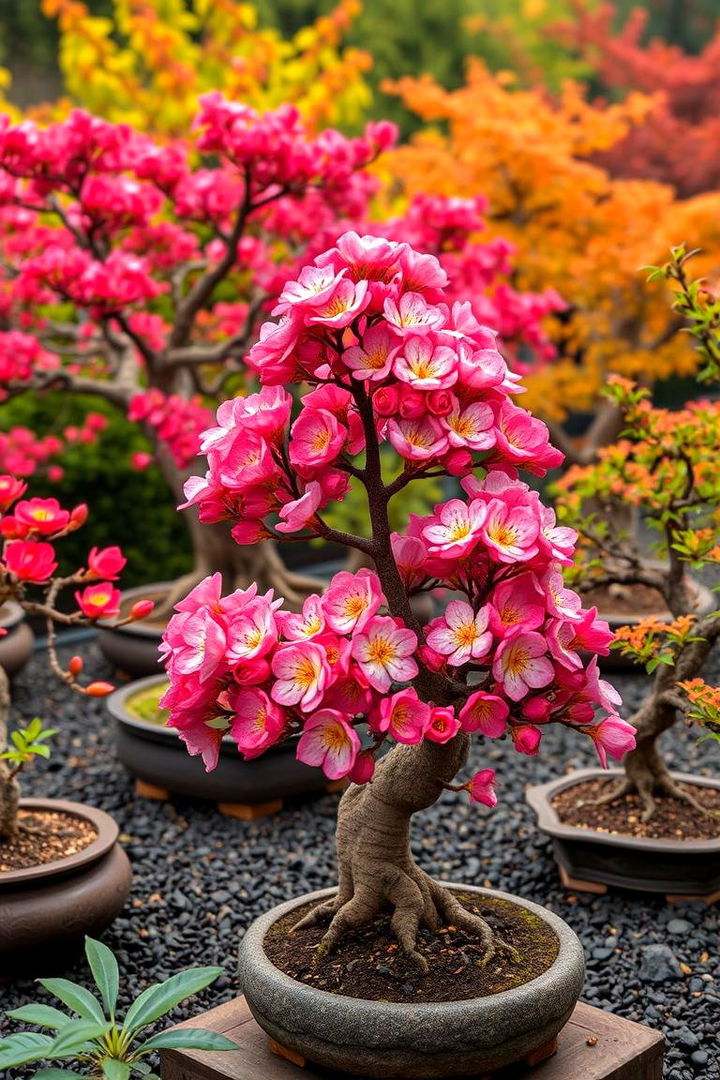
With blooming seasons as your guide, a seasonal bonsai blossoms garden celebrates nature’s cyclical transformations. This garden design highlights species that flower at distinct times of the year, creating a dynamic display of color and life. Embracing diversity, it incorporates a blend of trees that showcase unique blossoms, from delicate cherry blooms to vibrant spring florals. This approach not only enhances visual appeal but also invites learning about seasonal care and adaptive pruning techniques. By aligning your garden maintenance with nature’s calendar, you create a living artwork that evolves gracefully throughout the year.
10. Elevated Bonsai Terraces
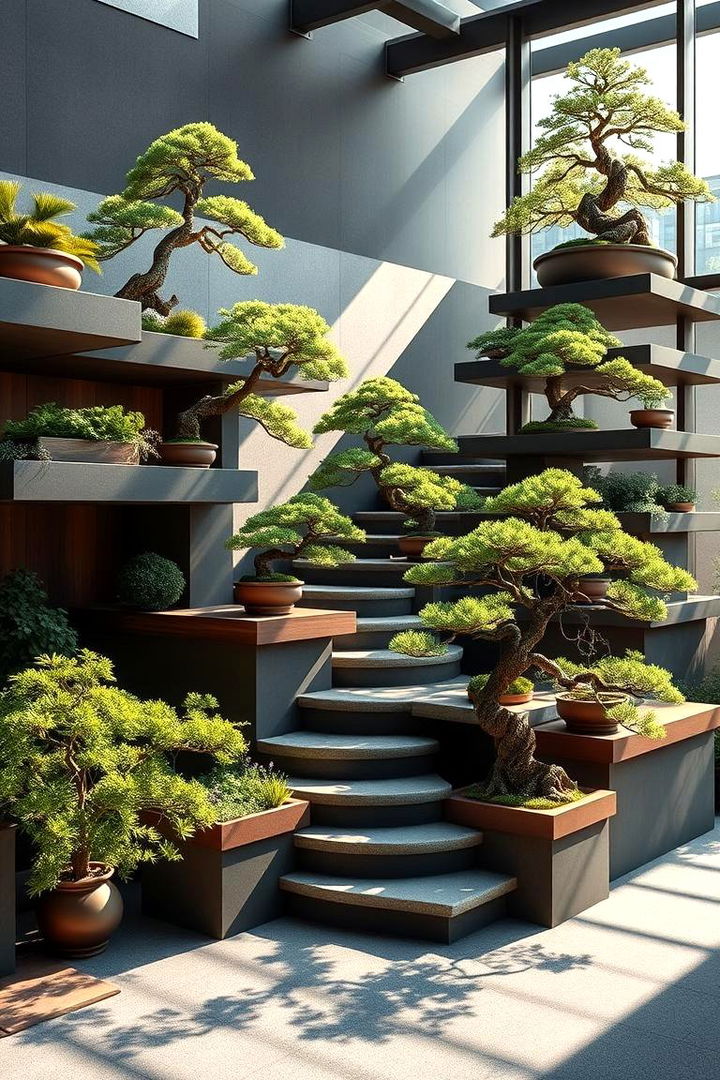
Take your garden to new heights with elevated bonsai terraces that offer multi-level designs and innovative spatial concepts. This idea employs tiered planters, small bridges, and seamlessly integrated steps to form a vertical landscape. The elevated arrangement enhances drainage and sunlight exposure while imparting a dramatic dimension to the garden. It is perfect for those looking to experiment with structure and form while maintaining the natural beauty of bonsai trees. Practical design tips include ensuring stability and using weather-resistant materials, making this concept both visually striking and functionally efficient.
11. Living Bonsai Walls
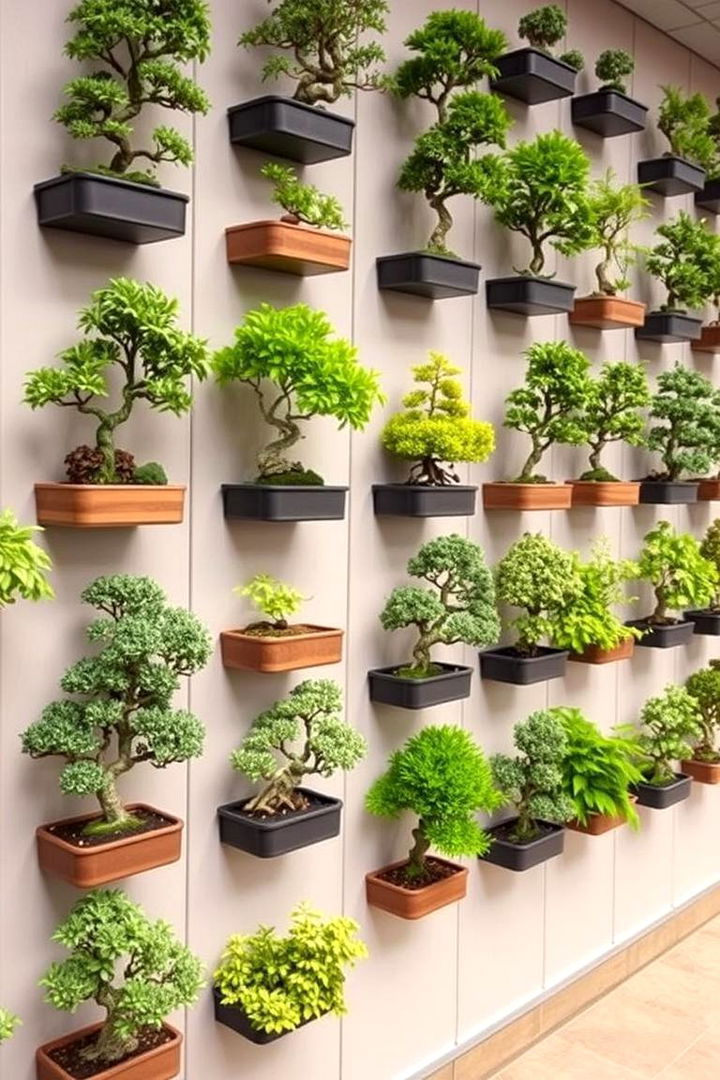
Unlike traditional layouts, a living bonsai wall creates a vertical garden that maximizes space while showcasing a living tapestry of miniature trees. This idea involves mounting specialized planters on a sturdy structure, enabling a creative display where bonsai trees become part of a natural mural. The arrangement emphasizes unity through repetition of texture, shape, and color, delivering a modern yet organic aesthetic. Suitable for urban spaces, the living wall allows for controlled growth and accessible maintenance, making it both visually appealing and practical. Integrate diverse species to add depth and seasonal vibrancy to your unique wall garden.
12. Eco-Friendly Bonsai Garden
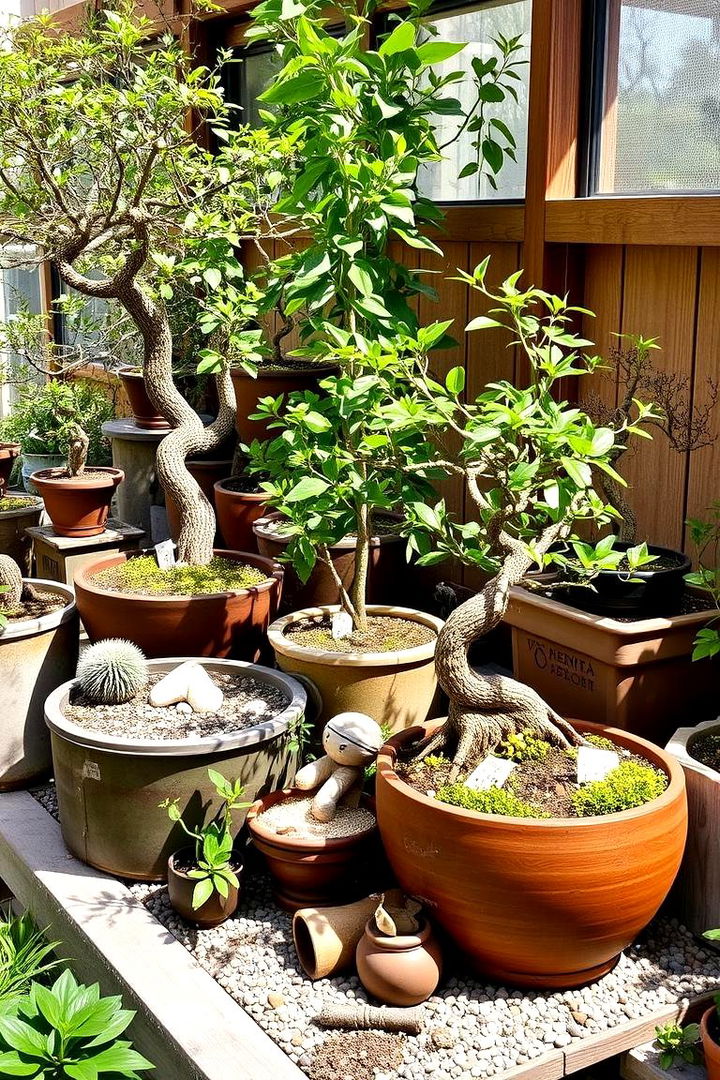
Due to the rising interest in sustainable gardening, an eco-friendly bonsai garden focuses on environmental harmony and conservation. This design opts for recycled planters, organic fertilizers, and native bonsai species that naturally thrive in local climates. The garden emphasizes water conservation, minimal chemical usage, and energy-efficient lighting to reduce its ecological footprint. By blending aesthetics with sustainability, you can create a garden that not only looks exquisite but also contributes to a healthier planet. This approach inspires responsible gardening practices that benefit both your outdoor space and the environment.
13. Artistic Bonsai Sculptures
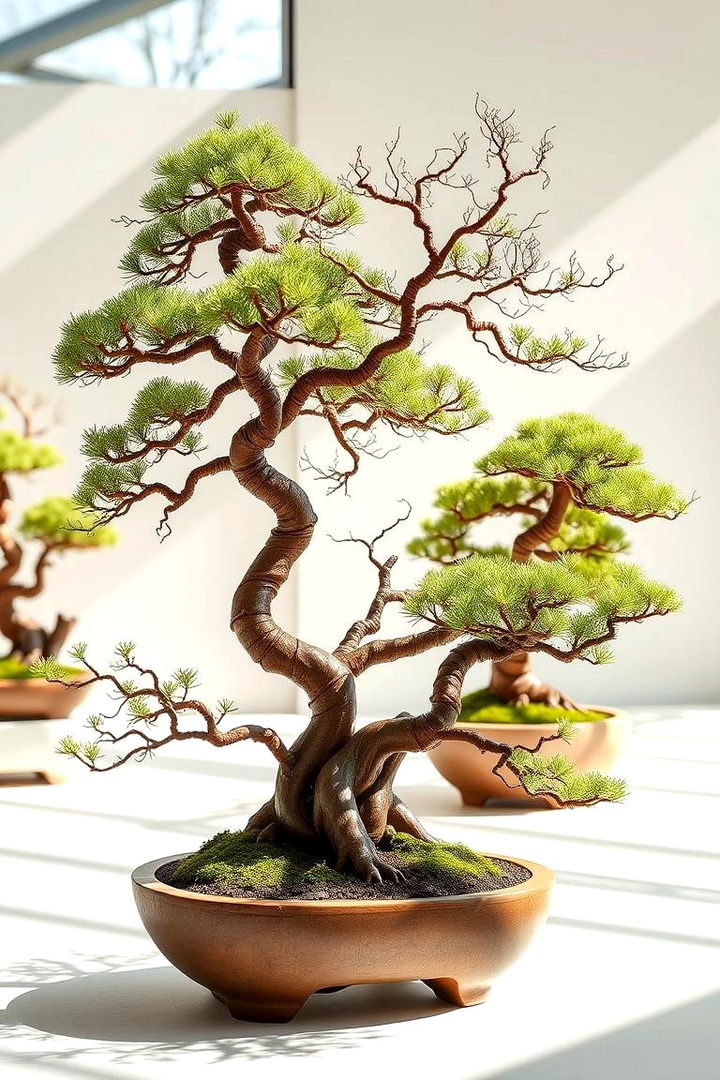
Surprisingly, transforming bonsai trees into living sculptures is a true expression of creativity. This idea involves skillfully pruning and wiring trees to adopt dynamic shapes and artistic forms, turning each specimen into a living masterpiece. Paired with creative planters and complementary artistic elements, these bonsai sculptures serve as focal points that spark conversation and admiration. The process is both technical and artistic, demanding patience and a keen eye for detail. Embrace the challenge of blending horticultural techniques with imaginative vision to create a garden that stands as a testament to living art and creative ingenuity.
14. Colorful Bonsai Vignettes
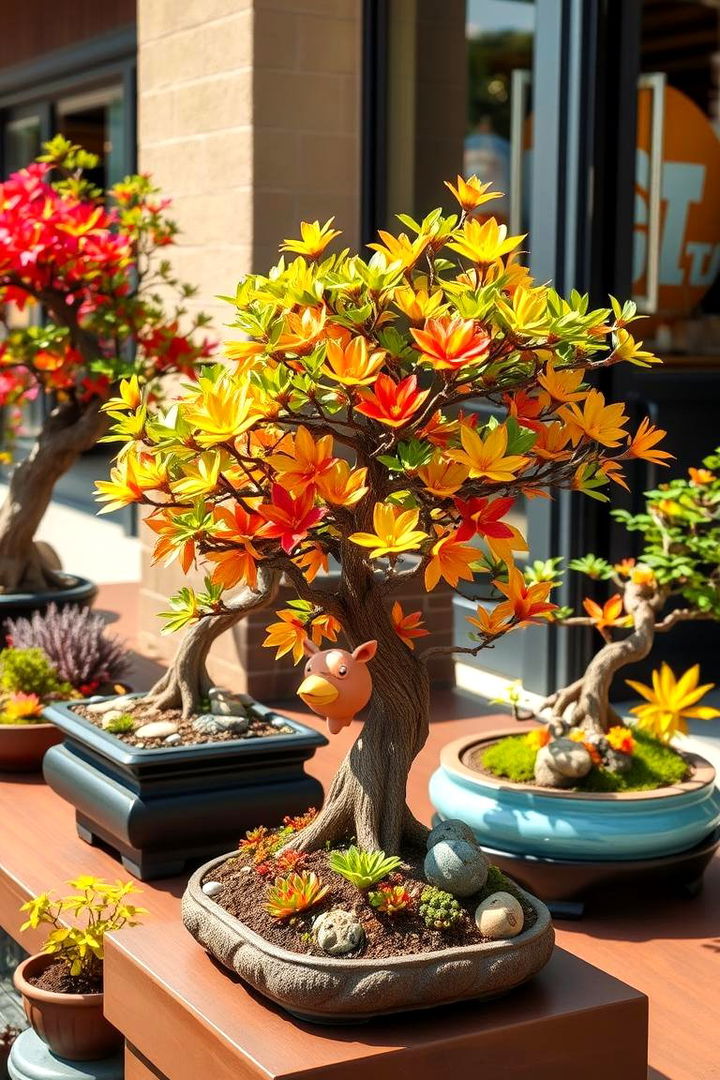
With a burst of creativity, colorful bonsai vignettes introduce splashes of vibrant hues to your garden design. This idea celebrates bonsai trees with naturally colorful foliage or seasonal tint, juxtaposed against contrasting backgrounds and artistic accessories. The arrangement is playful, merging unexpected color combinations with deliberate design to evoke emotions and stimulate visual interest. Actionable tips include carefully selecting trees with inherent color variety and complementing them with stylish planters and decor. This design not only brightens your space but also encourages experimentation with color theory and outdoor aesthetics in a unique, joyful setting.
15. Moonlight Bonsai Display

At twilight, a moonlight bonsai display transforms your garden into an enchanting nocturnal retreat. Soft, ambient lighting highlights the intricate details of pruned branches and textures of bark, creating dramatic silhouettes against the night sky. This design focuses on subtle nighttime accents like solar lights and reflective surfaces that bring out the delicate beauty of each bonsai specimen. Practical steps include positioning lights to avoid glare and experimenting with different intensities to allow the natural charm of the garden to shine. The ethereal atmosphere is perfect for evening reflections and quiet moments under the stars.
16. Herb and Bonsai Combination Garden
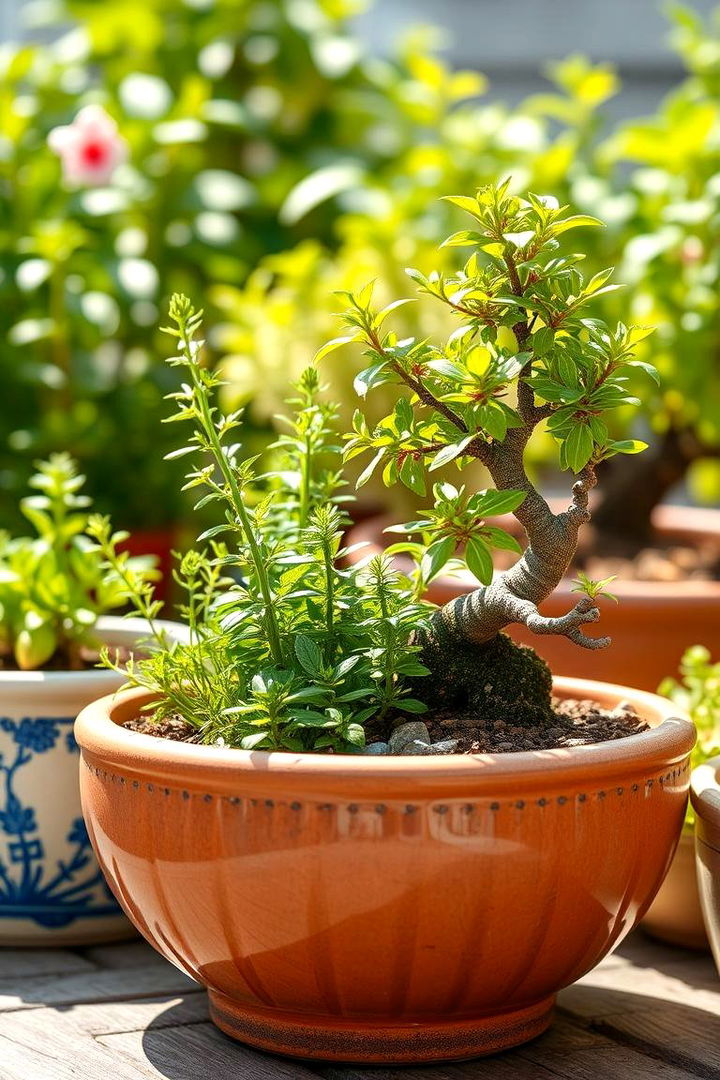
One creative fusion is a herb and bonsai combination garden that blends culinary delight with artistic gardening. Incorporating small herb plants like basil, thyme, or mint alongside miniature trees not only maximizes space but also adds aroma and functionality. The design smartly uses colored markers and themed planters to differentiate between the two groups while maintaining visual balance. This dual-purpose garden offers both sensory pleasure and practical kitchen benefits, encouraging organic growth and responsible harvesting. It provides a dynamic, living environment where creativity meets nourishment in an elegant outdoor setting.
17. Vintage Bonsai Charm
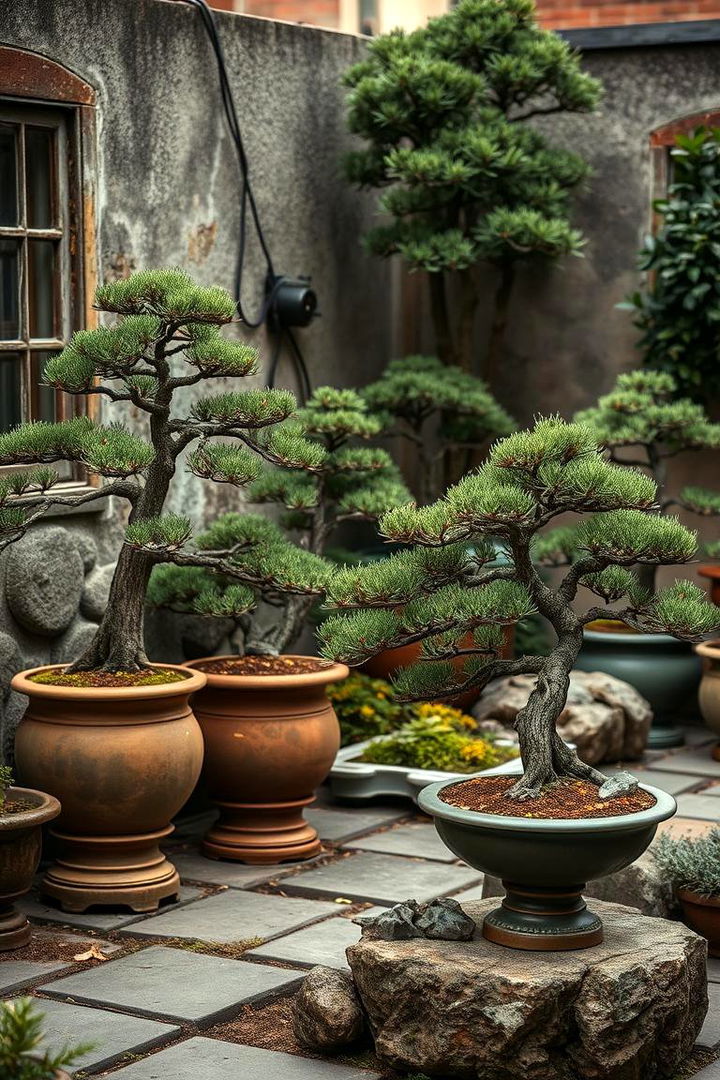
A vintage bonsai charm garden recalls traditional aesthetics with classic planters, weathered sculptures, and timeworn garden accessories. Embracing nostalgic elements, this design incorporates distressed wood, aged stone, and timeless bonsai species pruned with heritage techniques. The atmosphere is reminiscent of a bygone era, where each element tells a story of nature’s resilience and artistic tradition. Enhancing the space with antique decor and soft, muted lighting further deepens the nostalgic feel. This garden is a gentle reminder of history and offers practical insights into conserving age-old bonsai practices in a modern context.
18. Feng Shui Bonsai Garden
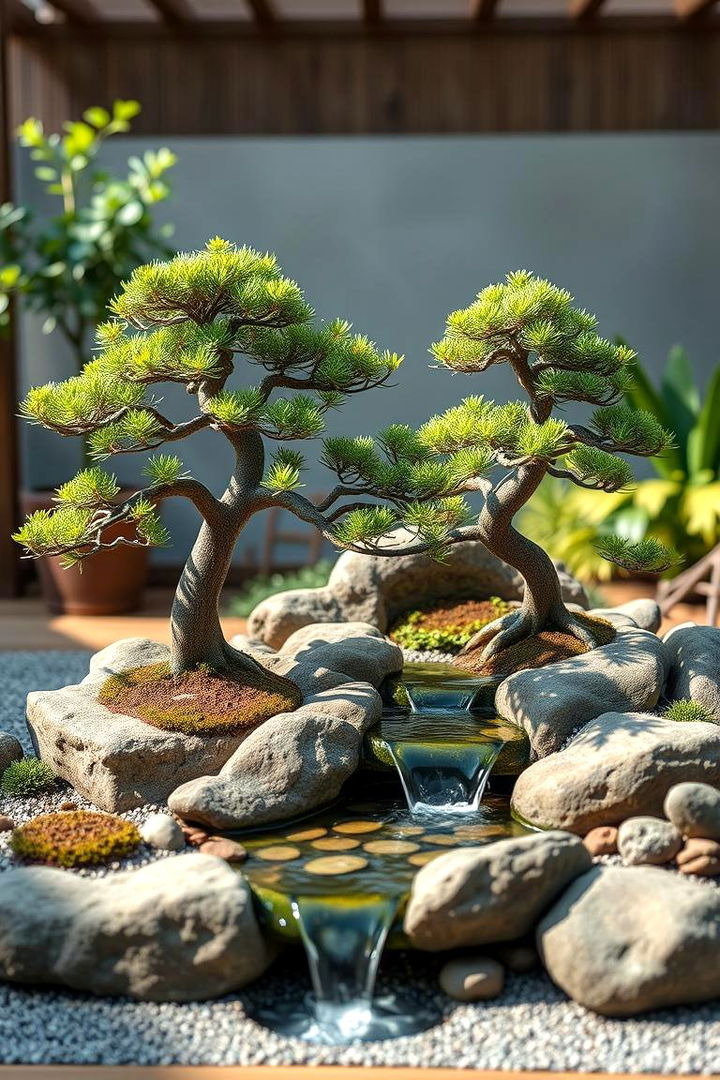
One effective strategy is to design a Feng Shui bonsai garden that harnesses the ancient art of energy flow. This idea incorporates specific placement of trees, water elements, and natural materials to promote harmony and balance. Carefully chosen bonsai species and thematic decor create an environment where positive energy and personal well-being take center stage. Tips include aligning furniture and planters with directional forces to achieve equilibrium. The design emphasizes balance between yin and yang, encouraging mindfulness in every detail. It’s a practical approach that fuses traditional wisdom with modern garden aesthetics for a truly rejuvenating space.
19. Interactive Bonsai Workshop Garden
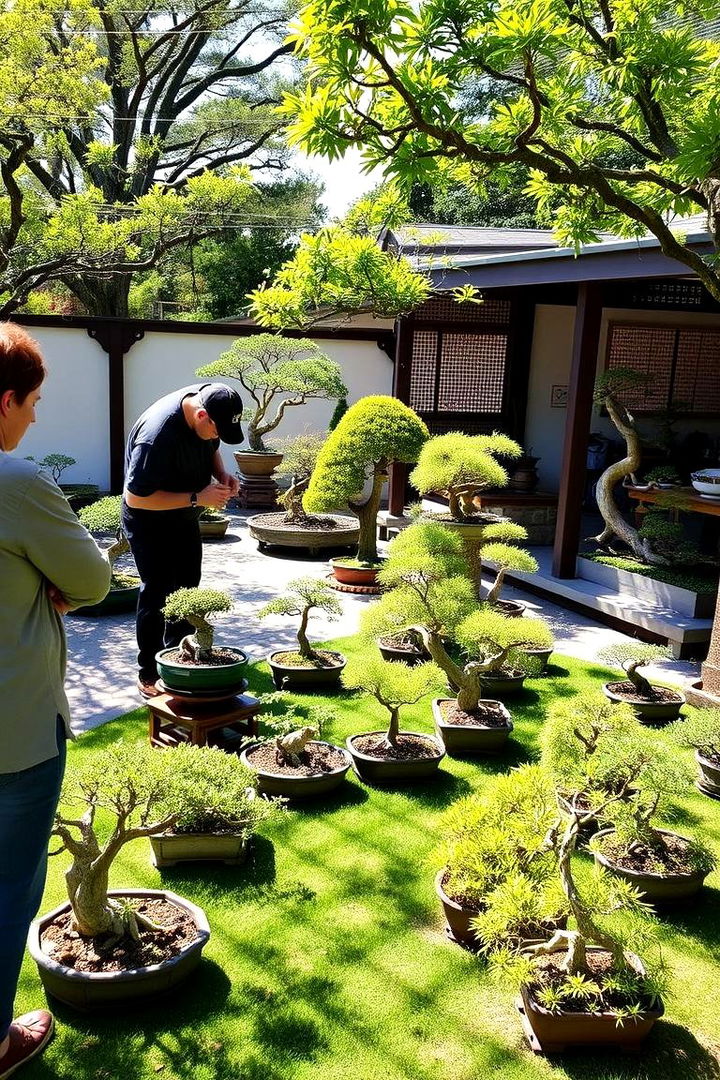
Taking a hands-on approach, an interactive bonsai workshop garden invites visitors to learn and experiment with the art of bonsai cultivation. This creative concept features designated areas for pruning demonstrations, wiring tutorials, and community planting sessions. The design includes ample seating, clear instructions, and a variety of bonsai specimens that showcase different techniques, making it both educational and engaging. It serves as a living classroom where gardening enthusiasts can share ideas and practical tips. This collaborative environment fosters a sense of community while inspiring personal growth through interactive learning and creative participation.
20. Vertical Bonsai Arrangements
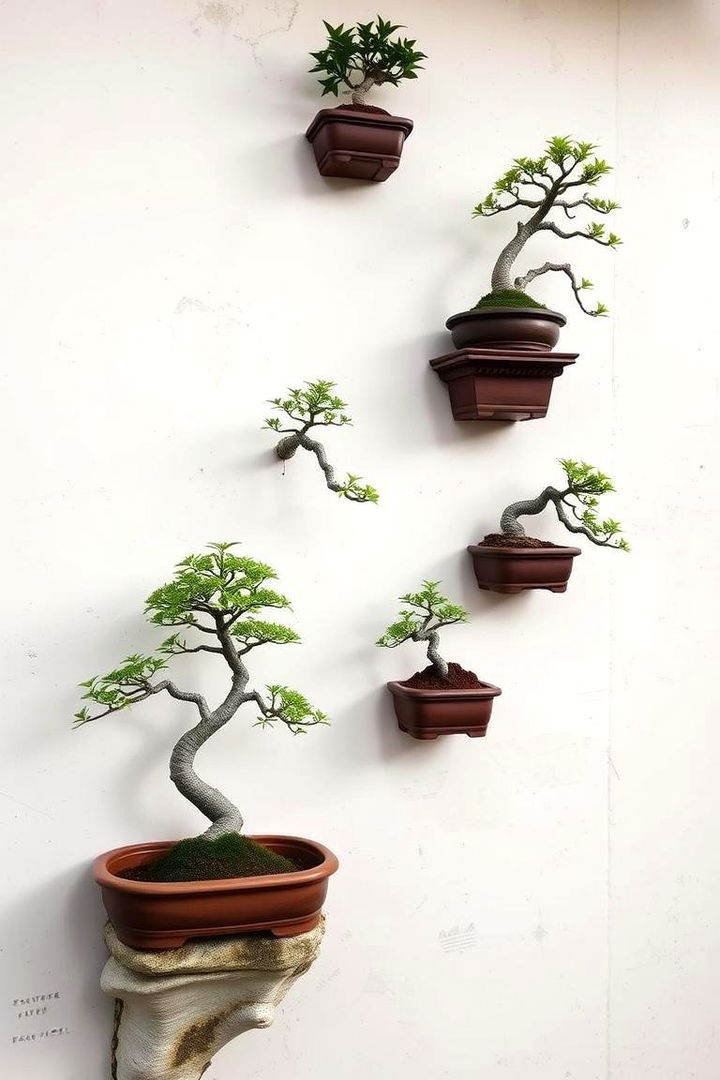
In a unique twist, a vertical bonsai arrangement utilizes wall-mounted planters and tiered design elements to create a striking garden display. This idea maximizes limited spaces by turning vertical surfaces into living art. The careful selection of slender bonsai trees, combined with textured backdrops and subtle lighting, yields a modern and innovative look. The vertical layout not only adds depth but also highlights the intricate details of each tree. Actionable advice includes selecting species that adapt well to vertical growth and installing secure, water-efficient systems to ensure longevity and ease of maintenance.
21. Illuminated Night Bonsai Garden
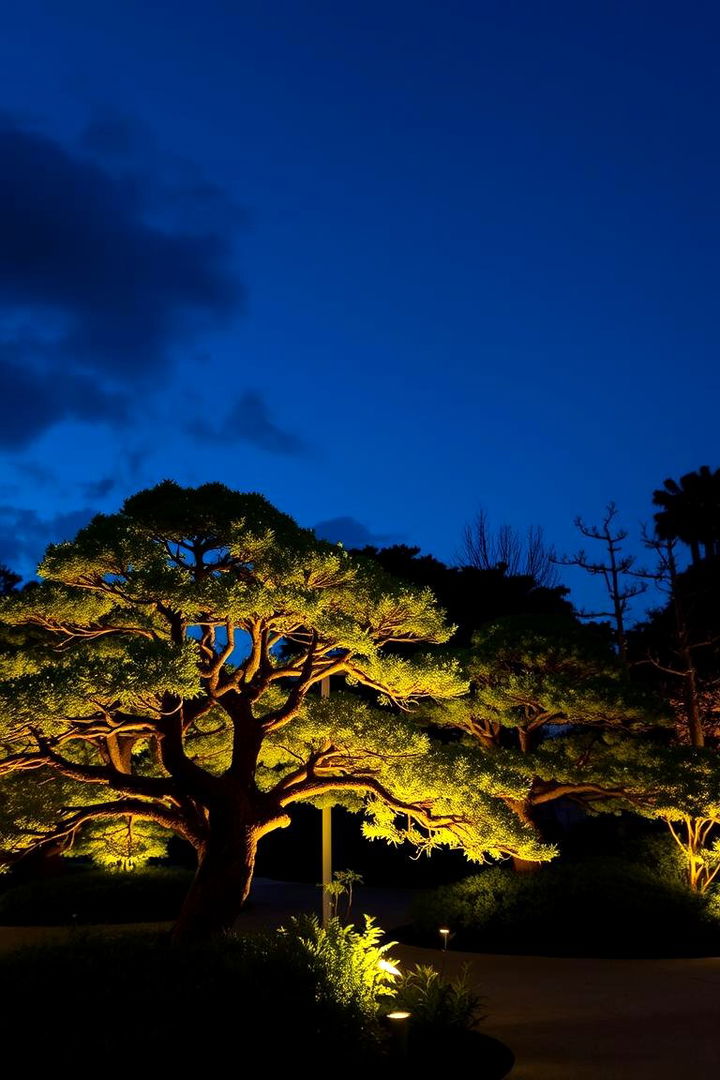
To create a magically ethereal space, an illuminated night bonsai garden uses well-placed outdoor lighting to accentuate the natural contours of the trees after dusk. Warm LED lights highlight the trees’ intricate details while creating soft shadows that evoke wonder and tranquility. This design focuses on layering light and shadow to produce a dramatic nightscape, enhancing both the natural charm of the bonsai and the ambiance of the garden. Practical elements include ensuring even distribution of light and safe wiring systems so that every visitor can experience a mesmerizing interplay of light and nature.
22. Sustainable Bonsai Oasis
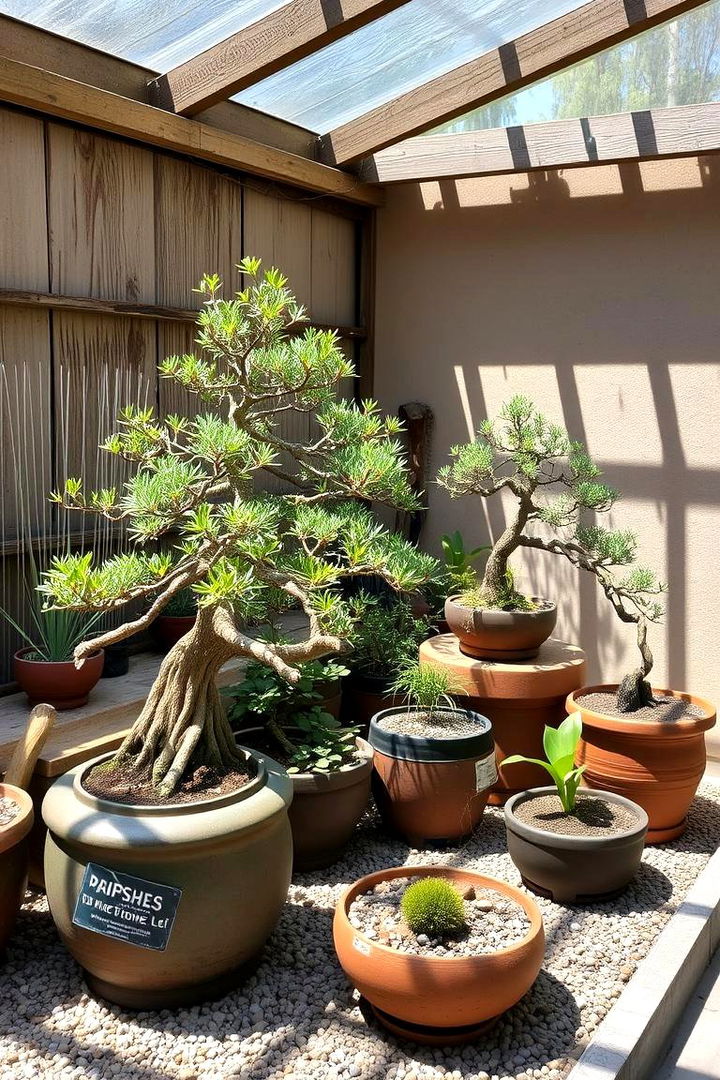
Taking an eco-conscious approach, a sustainable bonsai oasis integrates innovative recycling techniques, native species, and energy-saving tools into its design. This idea harmoniously merges environmental stewardship with aesthetic elegance, utilizing organic fertilizers, reclaimed materials, and water-efficient irrigation systems. Every aspect is thoughtfully designed to reduce waste while promoting the health of both the bonsai and the surrounding ecosystem. The layout encourages mindful gardening practices that respect nature’s cycles, offering long-term benefits for both your garden and the planet. This design is a practical and modern approach to cultivating living art sustainably and responsibly.
Conclusion:
Embracing a variety of creative designs, these bonsai garden ideas showcase the versatility and artistry inherent in miniature tree cultivation. From serene Zen-inspired layouts to sustainable, eco-friendly oases, each concept provides practical insights, innovative techniques, and a unique opportunity to connect with nature on a deeper level. The harmonious blend of tradition and modern creativity inspires both personal growth and a renewed appreciation for the natural world, making each garden a living masterpiece of tranquility and art.














